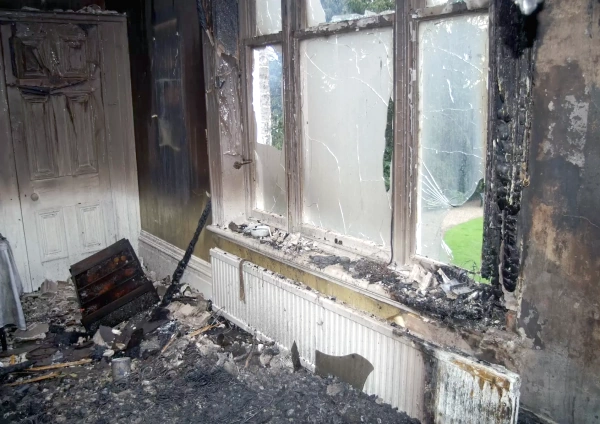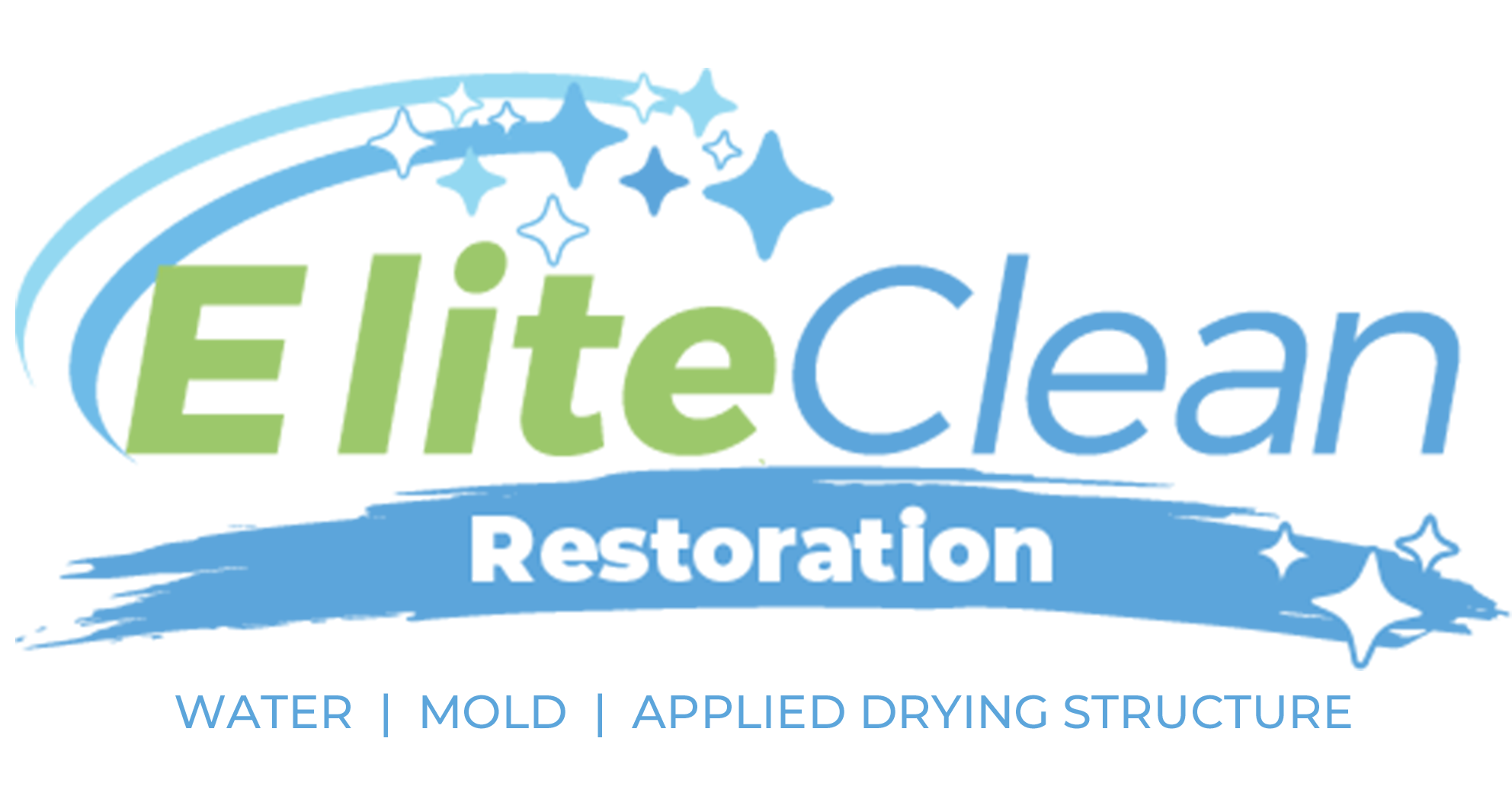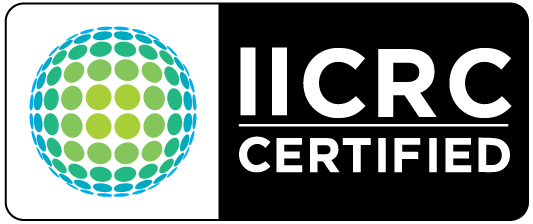Every 90 seconds, a house in the United States catches fire. Although not all fires destroy homes, even small fires can cause damage due to the heat, smoke, soot, and water used to extinguish the fire. Depending on how bad the fire was, you might have to rebuild a whole room, replace the drywall, or just put in a new carpet.
You must have the condition of your drywall examined as you attempt to restore your property to its former glory. When most people think of their home’s walls, they assume that they are secure. However, no wall, especially drywall, is impervious to fire damage. Drywall is an excellent material for modern home interior walls and ceilings.
However, it is vulnerable to severe damage following a fire. While some damage can be repaired, drywall replacement is often the best option. Time, money, and frustration can be saved by understanding when to replace drywall after a fire.
In the unfortunate event that your property suffers fire damage, Elite Clean Restoration is here to help you restore it to its former glory. Our qualified technicians have all of the necessary tools and experience to complete the job correctly the first time. We will inspect the property and create a customized salvage and restoration plan.
7 Signs You Need to Replace Drywall
While not all fire damage requires replacing drywall, you need to consider the size of the damage covered and how substantial the damage is. You can repair drywall if the damage is not severe. Unfortunately, some cases will necessitate a complete drywall replacement. To avoid costly renovations in the future, replace your drywall if you notice any of the following situations:
Extensive fire damage
Although most drywall is fire-resistant, it will catch fire if the flame temperature exceeds 176 degrees Fahrenheit. When exposed to fire, the highly flammable paper that forms the outside layer of drywall will burn. After a fire, the inside of the drywall may fall apart due to the high temperatures.
As temperatures rise, the heat from the fire will vaporize the water within the drywall, charring it and causing it to lose roughly half of its strength and sturdiness. When all of the water has evaporated, the gypsum will begin to heat up and the drywall may burn. The drywall will deteriorate and begin to disintegrate, causing structural damage. If the inner drywall crumbles, the drywall must be replaced.
Water damage
Following a house fire, you will want to return your home to its pre-fire condition as soon as possible. However, your home may have sustained multiple types of damage, not only from the fire but also from the smoke and water used to extinguish it. Drywall is a porous material. As a result, smoke and water can easily infiltrate it, causing severe damage. Water is the most common cause of serious drywall damage in homes following a fire.
Water erodes drywall’s structural integrity. Drywall exposed to high moisture levels will warp, sag, and even mold. Several factors will influence whether or not you need to replace your drywall after it has been exposed to water:
- How big is the area of the drywall exposed to water?
- How long has it been since the drywall came into contact with water?
- Is your drywall resistant to water?
If you leave wet walls in your home, mold, allergens, and bacteria will grow quickly. You may also encounter:
- Discoloration and deterioration: It is not uncommon to find discolored areas or sagging drywall after a fire. This indicates that moisture is still present in your walls. If you do nothing to address the humidity, it will continue to damage your drywall and promote the growth of mold and mildew.
- Bulges and bumps: Water exposure can deteriorate the structure of your walls, causing spots and bubbles. These bumps and lumps indicate that the wall structure is no longer sound.
- Sagging ceilings or walls: Following a fire, drywall ceilings may droop. The water used to extinguish the fire may have permeated the drywall, causing it to sag. If your ceiling is sagging, you should talk to a pro to find out if you need to replace the drywall.
Water damage to a wall can cause more harm than good. As a result, it is preferable to have the drywall replaced as soon as possible. Alternatively, if only a few parts of the drywall have become wet, you can replace sections of it rather than replace entire drywall panels. Water-damaged drywall may need to be replaced if you want to bring back the beauty and structural strength of your home.

Holes in the drywall
Replacing drywall with one or two small holes is rarely necessary. Minor holes can be quickly repaired. When dealing with larger holes, however, a little spackle here and there may not be enough.
Large holes, in addition to being extremely difficult to repair, can jeopardize the wall’s integrity. When this happens, it is always best to replace the drywall if the hole is bigger than six inches in diameter or if there are several small or medium-sized holes.
Drywall Cracks
High temperatures can cause the drywall to crack. Large gaps in your drywall after a fire indicate that the structural integrity of the panel has been compromised. Soot also penetrates the wall when it cracks. The acidity of soot can corrode the steel reinforcements in a wall.
While it is possible to patch a drywall crack if it compromises the structural integrity of the wall, drywall removal and replacement are required. This is why it is critical to have a structural engineer or someone with extensive experience inspect your building before beginning any repairs.
Popping nails
If you notice nails or screws poking out from a badly burned wall, it may need to be cut off or removed. The popping of nails after a fire indicates that your walls have shifted. Because of the heat from the fire, nails and screws may pop through the drywall.
Smoke
Most people believe that fire is the only danger during a fire, but there is another dangerous enemy in every fire—smoke. Regardless of the size of the fire, smoke damage is unavoidable. In a fire, smoke inhalation is the leading cause of death.
Smoke pervades every surface and object. The drywall is porous, making it an ideal surface for smoke to infiltrate. Once the smoke has entered your walls, it can be difficult to remove. Smoke from fires can cause a variety of property damage, including:
- Overpowering smells
- Staining and discoloration
- Toxin buildup
Even with professional assistance, removing the odor and lingering effects of smoke from your insulation can be difficult. In this case, replacing the drywall is the best option.
Mold growth
This is possibly the most difficult type of drywall damage to detect after a fire. Mold can grow in your drywall undetected for months before it becomes visible to the naked eye. Once this fungus establishes itself in the drywall, it can persist even after the drywall has been dried out. The mold feeds on the organic materials mixed into the drywall plaster during this time.
Mold eats away at the drywall from the inside out. When this happens, the mold will multiply and spread throughout the interior walls of your home, eventually reaching the ventilation points. At this point, the mold spores become airborne and spread throughout your home. Mold spores pose a significant health risk to your family if left untreated. Long-term lung problems, as well as eye and skin irritation, may worsen.
It is preferable to avoid this problem entirely with drywall replacement than to risk airborne mold spores forming inside your interior walls. Mold in drywall symptoms is similar to those of excess moisture, such as warps, discoloration, or sagging in the drywall. If mold grows on your drywall, you will need to replace the parts that are affected.
Hire Professional Fire Damage Restoration in Indianapolis, IN
One of the most terrifying and traumatizing things you can go through is watching your house burn down. Even if everyone is unharmed, sorting through the ensuing mess and damage can be overwhelming. Furthermore, fire and smoke residues are toxic and pose serious health risks. Our certified fire restoration team of experts understands how to turn the clock back on your damaged property.
We are professionally trained to repair or replace fire-damaged drywall. Do not jeopardize your family’s health and safety by attempting to repair fire damage on your own. Contact Elite Clean Restoration today to find practical and long-term solutions to your drywall replacement issues.

